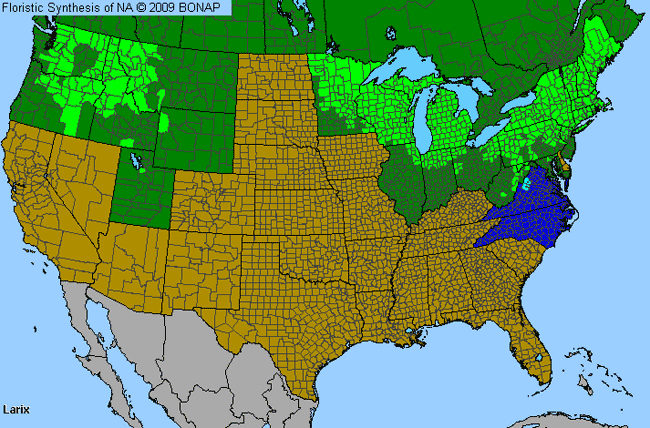Larch (Larix)

Larch Genus Details

Several species of larch are native to the northern U.S. and others were introduced from Europe. Larches are large trees that reach 50-80 feet tall. This evergreen has deciduous needles that range from 3/4 to 1 1/4 inch long. The needles are light green in color which turn yellow in autumn before shedding. Cones are 1 to 1 1/2 inches long, egg shaped and stalkless. Native Americans once tied the slender roots of Larch trees together to use as strips of bark for their canoes.
Larch Allergy Info

Larch have a high production of pollen, but, as a member of the Pinaceae family, the pollen has relatively little allergenic importance.
Larch Pollen Description

Pine grains are large due to their sacs or bladders, which make them one of the easiest pollen grains to identify. These sacs also allow them to be carried great distances by the wind. Among winged grains, the body is subspheroidal to broadly ellipsoidal. The bladders are generally reticulate or occasionally smooth.
Pollen grains vary in size from 40-85 micrometers.
Species in This Genus

Allergenicity Legend:
 Mild Allergen |
Mild Allergen |
 Moderate Allergen |
Moderate Allergen |
 Severe Allergen |
Severe Allergen |
 Allergy Test Available
Allergy Test Available
Larch (Larix) is a genus of the PINACEAE family.
This genus includes the following allergenic species:
This genus includes the following allergenic species:













